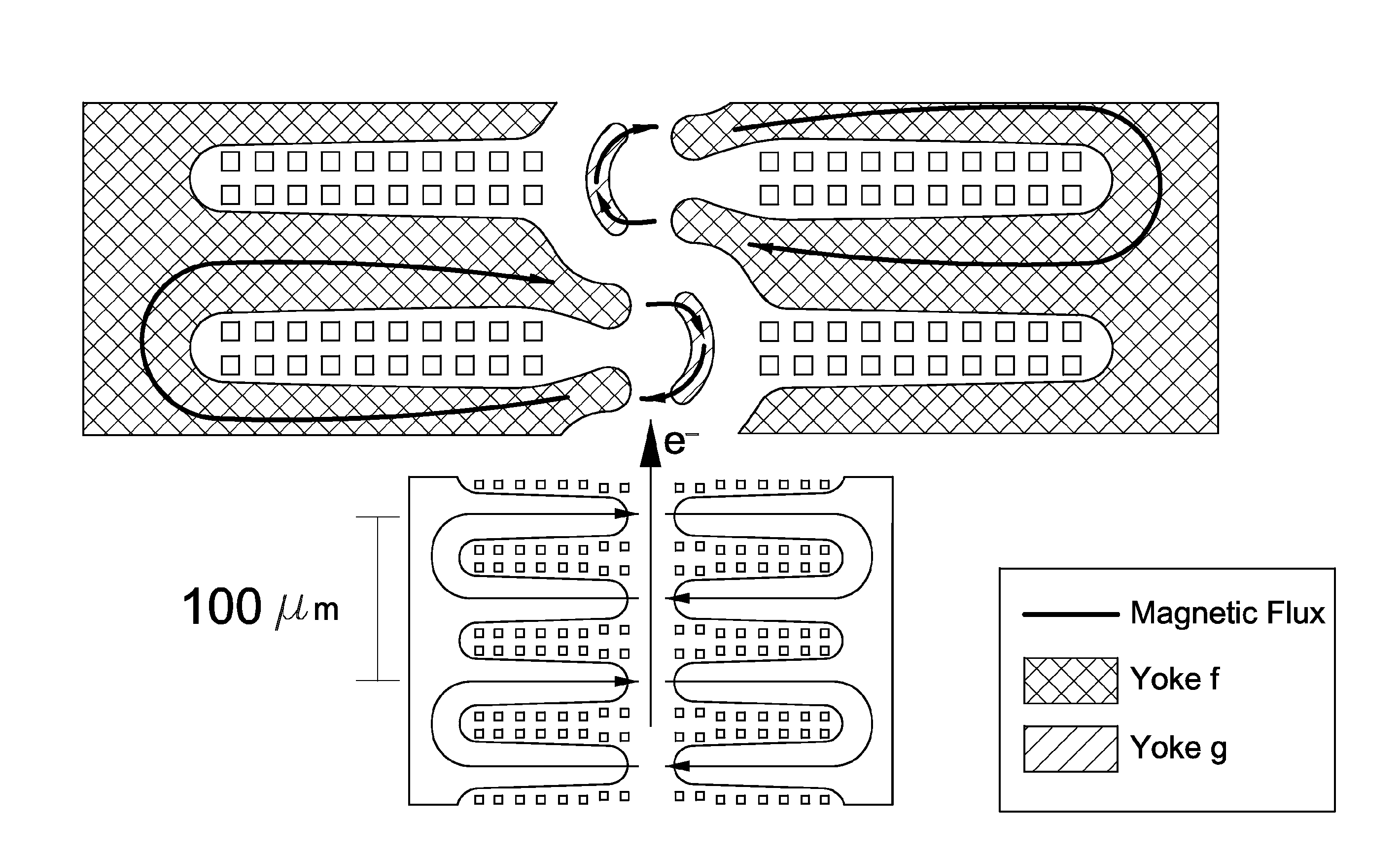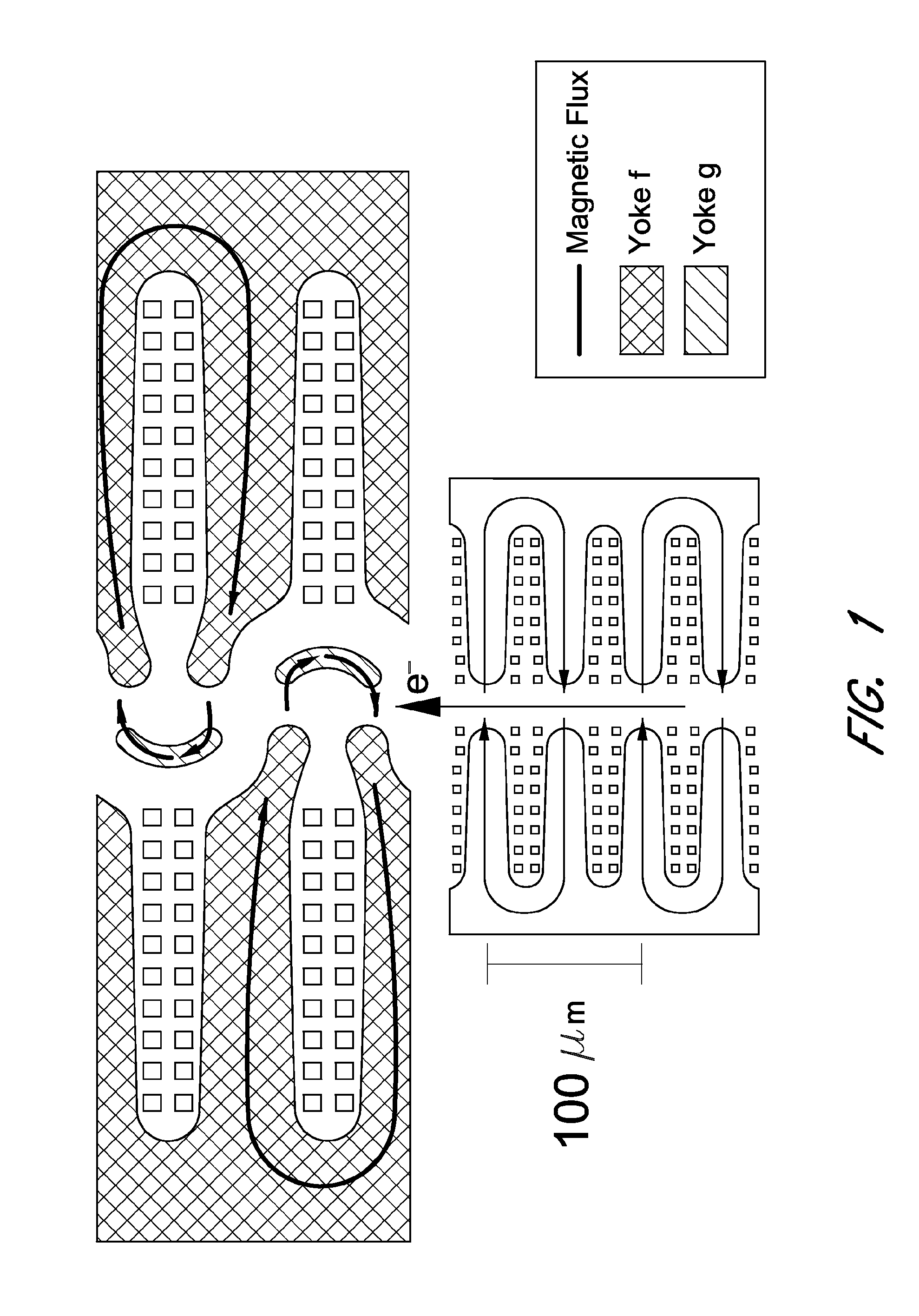Surface-micromachined micro-magnetic undulator
a surface-micromachined, undulator technology, applied in the field of undulators, can solve the problems of undulators occupying a volume greater than one cubic meter, weighing more than 10 kilograms, and requiring significant structural support, and achieve the effect of increasing the current density
- Summary
- Abstract
- Description
- Claims
- Application Information
AI Technical Summary
Benefits of technology
Problems solved by technology
Method used
Image
Examples
Embodiment Construction
[0032]As is well known, free electron lasers (FEL) use a relativistic electron beam as the lasing medium which moves through a magnetic structure. In particular, in a FEL, a beam of electrons is accelerated to almost the speed of light. The beam passes through an oscillator / undulator (sometimes referred to as a “wiggler”), which generates a periodic transverse magnetic field using an arrangement of magnets with alternating poles within an optical cavity along the electron beam path. The undulator may cause, at least in part, the beam electrons to follow a sinusoidal path.
[0033]However, as discussed above, conventional undulators suffer from many deficiencies, including size, weight, power requirements, difficulty of manufacturer, insufficiently narrow spectral output, etc. Some or all of these deficiencies are overcome by certain embodiments described herein.
[0034]Certain embodiments provide a compact, low-powered micromachined undulator, which may be a soft-magnetic undulator havin...
PUM
 Login to View More
Login to View More Abstract
Description
Claims
Application Information
 Login to View More
Login to View More - R&D
- Intellectual Property
- Life Sciences
- Materials
- Tech Scout
- Unparalleled Data Quality
- Higher Quality Content
- 60% Fewer Hallucinations
Browse by: Latest US Patents, China's latest patents, Technical Efficacy Thesaurus, Application Domain, Technology Topic, Popular Technical Reports.
© 2025 PatSnap. All rights reserved.Legal|Privacy policy|Modern Slavery Act Transparency Statement|Sitemap|About US| Contact US: help@patsnap.com



